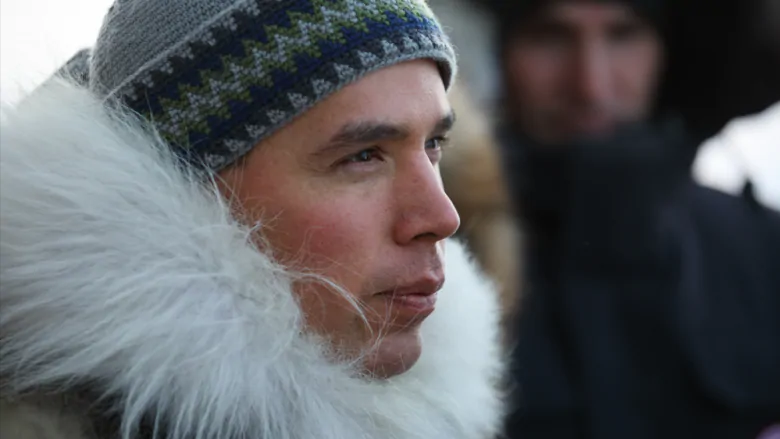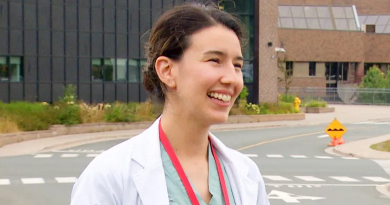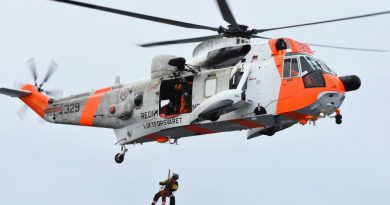President of Inuit organization in Canada says it’s ‘a transformative time’; here’s what he wants to do next

Natan Obed is starting his 3rd and final term as ITK president
Natan Obed will serve a third — and final — term as the president of Inuit Tapiriit Kanatami (ITK), the national organization representing the Inuit, after he was acclaimed at the end of the nomination period on Aug. 18.
Obed, who grew up in Nain, first became president in 2015 and was re-elected for a second term in 2018.
He spoke with Labrador Morning host Janice Goudie on Wednesday about his upcoming third term.
The conversation has been edited for clarity and length.
Q: What’s on your mind as you enter into your third term as president of ITK?
Natan Obed: First off, [it’s] just a wonderful opportunity and I’m so thankful to have been acclaimed for my third term. I’m in Nain this morning, and I’m just thinking how grateful I am to the Nunatsiavut government and to Johannes Lampe, the president, and the executive council for nominating me. There’s a lot of work ahead, but I feel like we’re right in the middle of so many great projects and things that will benefit Inuit across Inuit Nunangat.
Q: The ITK actually came out with a release yesterday saying that you have 15 priorities that you’re putting forth for the 2021 federal election. Now, without going through all of them, can you tell us which ones are on top of the list?
NO: We’ve been working since 2015 on something called an Inuit Nunangat policy, which is basically to realign all 30-something federal departments in a way that understands the Inuit homeland, Inuit Nunangat, and also works in a distinctions-based way, for funding allocations, for decisions on programming. We’ve tried to work on the big picture, not just one particular program with one particular dollar figure, but on the structural changes needed by the federal government to respect Inuit and the way in which Inuit interact with the federal government and provinces and territories.
Then we get into some of the issues that have been crises or have been huge priorities for Inuit for a long time, things such as infrastructure, housing, broadband connectivity, ports, airstrips, water and sewer. In the face of climate change, in the face of these communities really not having access to roads or other means of connection with southern Canada, it’s so imperative to have proper infrastructure. Also, things like mental health and suicide prevention. The more recent concerns around grave sites and working with the federal government on identifying any places where Inuit went to residential school and perhaps possible grave sites there. And then also murdered and missing Indigenous women and girls.
There are so many different priority areas, but we’ve tried to focus on the ones that we know we can work with with this federal government that are priorities for all Inuit in Canada.
Q: It sounds like a lot of work and a lot of top priorities for you to tackle in the next four years as president. Where do you even begin?
NO: We have a strategic plan and we also have a number of things that we’ve already started, things like the Qanuippitaa? Inuit Health Survey. We are just about ready to do the first round of the Inuit health survey across Inuit Nunangat, and that’s a project that’s been ongoing for the last four years. We also are working on ending tuberculosis, and that has been ongoing for five years.
There’s so much work that we’ve already started and that there’s momentum on, and so for me, it’s just actually just going back [into] the office and carrying on. But it’s so important to have the direction of our board of directors and the leadership from the four Inuit regions that then guide anything that I do in my political role, [and] anything our organization does.
Q: Now, you’ve said that this would be your last term as president. When you look back over the last two terms you’ve served, headed into your third now, how do you feel that you’ve accomplished all these goals? And how are you feeling about representing the Inuit of Canada?
NO: I’ve thought a lot about my place in the world, my place in Inuit Nunangat, and I think of the time that I’ve spent in Nain, I think of my family here in Nain and in Hopedale and Upper Lake Melville. I think a lot about the opportunities that I’ve had, and I feel very blessed to have served in this particular role and have the opportunity to continue to serve. I’ve been president of ITK in a transformative time in this country. I’ve been fortunate enough to work with a government and a prime minister that believe in reconciliation. We’ve been able to do things that have never been done before when it comes to the relationship that we have with the federal government and some of the funding allocations that we’ve received.
Also, just the attitude of Canadians towards Inuit and towards Indigenous people in Canada. It’s changing so rapidly, and yes, there is still racism and there are lots of challenges, but at the same time, I could have never expected the amount of interest by general Canadians towards Inuit priorities and Inuit concerns. It motivates me to be able to tell our stories, to be able to provide a perspective that most Canadians never have thought of when it comes to, say, the size of Inuit Nunangat, a third of Canada’s landmass. Or, just the way in which our communities function, the pride that we have in our language and our culture, all of these things motivate me to represent Inuit.
And most of all, I believe in Inuit governance. I believe in self-determination and I feel like I’m at this point in time where I can make a positive contribution towards that goal of returning to self-determination across Inuit Nunangat, and it’s pretty exciting to be a part of that.
Q: You had no opposition in the leadership race. Do you think there’s going to be people willing to step up to the plate when you’ve finished this term?
NO: I hope so. I’ve interacted with so many exceptional Inuit leaders, both emerging leaders and leaders that have been serving Inuit for decades. I have no doubt that there will be an Inuk that comes after me that can build upon what we have been doing in the last six years. We all have different leadership styles, we all have different perspectives, and I’m thankful for the opportunity to provide my particular perspective in my leadership role. But there’s more than one way to lead a national organization, or any organization, and so I know that whoever comes after me will put a creative and personal mark on all the work that is ongoing and the work that’s to come.
-With files from Labrador Morning
Related stories from around the North:
Canada: Inuit women’s org wants federal party leaders to commit to having Inuit women at decision table, Eye on the Arctic
Greenland: Greenland’s more prominent role on Arctic Council important signal to int’l community says foreign minister, Eye on the Arctic
Norway: Are Norway’s energy policies caught between ‘black gold’ & green ambitions?, Blog by Marc Lanteigne
United States: Biden admin goes back to drawing board on oil leasing in Arctic Refuge, Alaska Public Media



